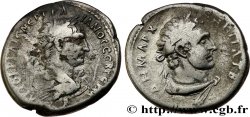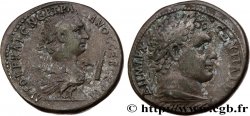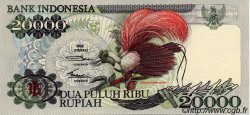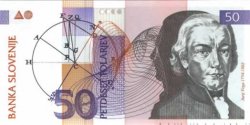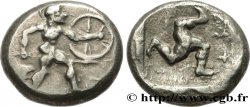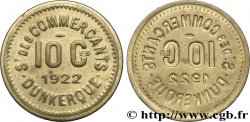v16_0522 - TRAIANO Tétradrachme syro-phénicien
MONNAIES 16 (2002)
Prezzo di inizio : 100.00 €
Valutazione : 180.00 €
Prezzo realizzato : 100.00 €
Numero di offerte : 1
Offerta maxima : 117.00 €
Prezzo di inizio : 100.00 €
Valutazione : 180.00 €
Prezzo realizzato : 100.00 €
Numero di offerte : 1
Offerta maxima : 117.00 €
Tipo : Tétradrachme syro-phénicien
Data: 111
Nome della officina / città: Tyr, Phénicie
Metallo : argento
Diametro : 25 mm
Asse di coniazione : 6 h.
Peso : 13,98 g.
Commenti sullo stato di conservazione:
Usure régulière. Bien centré, portrait de Melqart dans la tradition autochtone
N° nelle opere di riferimento :
Pedigree :
Cet exemplaire est le 1515_028 de la base TSP
Diritto
Descrittivo diritto : Tête laurée de Trajan à droite posée sur un aigle debout à droite ; dans le champ à gauche, une massue posée en oblique.
Legenda diritto : AUTOKR KAIS NER TRAIANOS SEB GERM DAK (Autokrator Kaisar Nerua Traianos Sebastos Germanikos Dakikos)
Traduzione diritto : (L'empereur césar Nerva Trajan auguste germanique dacique).
Rovescio
Descrittivo rovescio : Tête laurée de Melqart (Hercule) à droite, la léonté nouée sur le cou.
Legenda rovescio : DHMARC/ EX - IE UPATE. (Dhmarcikhs Exousias IE Upatos E)
Traduzione rovescio : (Puissance tribunitienne, An 15, consul pour la cinquième fois).
Commento
Le portrait de Melqart est, sur ces tétradrachmes, plus ou moins hellénisé. Sur notre exemplaire il est particulièrement massif et brutal, probablement au plus proche de la représentation cultuelle du héros, donnant une image de force physique très impressionnante, particulièrement par le cou massif de lutteur.
Tyr est la principale ville de Phénicie. Le monnayage pour Trajan commença en 98, puis connut une interruption de cinq ans et reprit avec les émissions liées au cinquième consulat (103) avec un style proche des émissions d’Antioche. Michel Prieur fait remarquer qu’il existe une liaison de coins entre les différents types de revers. Il émet l’idée que l’atelier de Tyr aurait frappé pour l’ensemble de la région. Les pièces de l’atelier d’Antioche sont particulièrement rares (PR. 151-153) alors que les émissions pour Tyr sont abondantes (PR. 1477-1522).
The portrait of Melqart on these tetradrachms is more or less Hellenized. On our copy it is particularly massive and brutal, probably as close as possible to the cult representation of the hero, giving an image of very impressive physical strength, particularly through the massive wrestler's neck. Tyre is the main city of Phoenicia. Coinage for Trajan began in 98, then experienced a five-year interruption and resumed with the issues linked to the fifth consulate (103) with a style close to the issues of Antioch. Michel Prieur notes that there is a die link between the different types of reverse. He suggests that the Tyre mint would have struck for the entire region. Coins from the Antioch mint are particularly rare (PR. 151-153) while issues for Tyre are abundant (PR. 1477-1522)
Tyr est la principale ville de Phénicie. Le monnayage pour Trajan commença en 98, puis connut une interruption de cinq ans et reprit avec les émissions liées au cinquième consulat (103) avec un style proche des émissions d’Antioche. Michel Prieur fait remarquer qu’il existe une liaison de coins entre les différents types de revers. Il émet l’idée que l’atelier de Tyr aurait frappé pour l’ensemble de la région. Les pièces de l’atelier d’Antioche sont particulièrement rares (PR. 151-153) alors que les émissions pour Tyr sont abondantes (PR. 1477-1522).
The portrait of Melqart on these tetradrachms is more or less Hellenized. On our copy it is particularly massive and brutal, probably as close as possible to the cult representation of the hero, giving an image of very impressive physical strength, particularly through the massive wrestler's neck. Tyre is the main city of Phoenicia. Coinage for Trajan began in 98, then experienced a five-year interruption and resumed with the issues linked to the fifth consulate (103) with a style close to the issues of Antioch. Michel Prieur notes that there is a die link between the different types of reverse. He suggests that the Tyre mint would have struck for the entire region. Coins from the Antioch mint are particularly rare (PR. 151-153) while issues for Tyre are abundant (PR. 1477-1522)








 Segnalare un errore
Segnalare un errore Stampate la pagina
Stampate la pagina Condividi mia selezione
Condividi mia selezione Fai una domanda
Fai una domanda Consegnare / vendere
Consegnare / vendere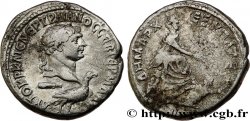
 Descrittivo
Descrittivo